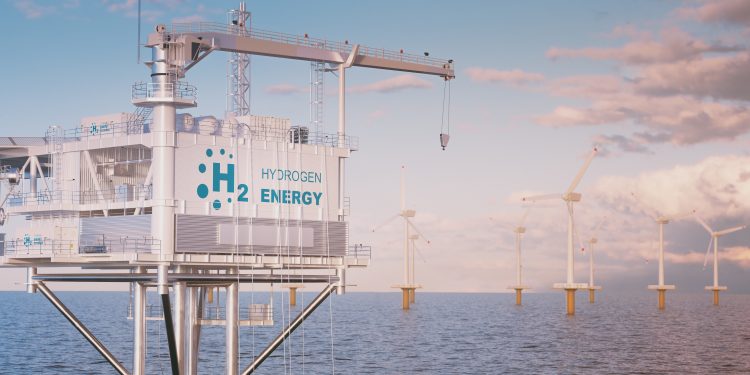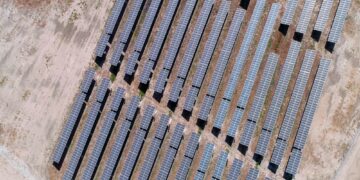Green hydrogen stands as a pivotal component in the renewable energy sector, playing a crucial role in steering our future towards sustainability. This discourse delves into the significant advancement of integrating green hydrogen into the power grid via strategic collaborations, emphasizing its role in promoting carbon neutrality and fortifying energy security. It underscores the need for innovation, infrastructure enhancement, and joint efforts vital for this transformation, leading to a more sustainable and robust energy framework.
Image Credit: Deemerwha studio/Shutterstock.com
Produced through the electrolysis of water powered by renewable energy sources, green hydrogen is a linchpin in the shift to eco-friendly energy systems. The carbon-free production process of this adaptable energy medium aligns with the global thrust for carbon neutrality, thereby reinforcing energy security.
Governments, industries, and environmental agencies worldwide are recognizing the importance of green hydrogen in the decarbonization of economies. International strategies and agreements have acknowledged its pivotal role in facilitating the transition to sustainable energy, reflecting a concerted dedication to combating climate change and ensuring a resilient energy future.
Crucial to the advancement of green hydrogen as a viable sustainable energy source are the multifaceted partnerships that span government, the private sector, and academia. These collaborations are key in navigating the technological and economic challenges linked to the production and integration of green hydrogen.
Entities such as the Hydrogen Council demonstrate how over 80 companies globally have banded together to propel the hydrogen economy forward through investments and the exchange of technologies. Supportive government policies and regulations are also fundamental, offering financial incentives, research funding, and setting standards for hydrogen production, storage, and distribution.
The European Union’s Hydrogen Strategy is a testament to this, presenting a bold framework for investments and infrastructure development, with the aim of augmenting green hydrogen production by 2030.
Technological breakthroughs in electrolyzer technology have heightened efficiency and trimmed costs, while the increased capture of renewable energy, particularly from solar and wind, has improved the viability of green hydrogen as a cost-effective solution. Nevertheless, the volatile nature of hydrogen demands the cultivation of specialized infrastructure for safe storage and transport. This includes the retrofitting of current energy grids to accommodate hydrogen, introducing hybrid systems capable of managing both hydrogen and traditional energy forms.
Illustrative of green hydrogen’s integration into the grid is the Neom project in Saudi Arabia, set to become the largest green hydrogen plant globally. This project is a collaboration between ACWA Power, Air Products, and NEOM, deriving power from solar and wind to produce green hydrogen. Backed by substantive financial investment, advanced technology, and robust policy support from the Saudi government, this initiative aims to establish the kingdom as a leader in green hydrogen production.
In France, the HyGreen Provence Project showcases regional cooperation in the production of green hydrogen, involving ENGIE, local government, and various technology providers. Slated for completion by 2028, this initiative aims to harness solar power for green hydrogen production, underpinning the significant role of public-private partnerships in advancing the hydrogen economy.
However, the integration of green hydrogen into the energy grid is not without its challenges, which include technical, economic, and regulatory hurdles. Technical challenges include the lower energy efficiency of hydrogen production through electrolysis and the need for safe storage and transportation solutions. Economically, the steep initial costs of electrolyzer installations and infrastructure for hydrogen storage and distribution call for consistent and significant investment. Regulatory barriers, such as the absence of global standards for hydrogen production and usage, can also hinder adoption. To confront these challenges, ongoing research is devoted to enhancing electrolyzer efficiency and establishing robust safety protocols, while pilot projects assess the feasibility of hydrogen in various energy systems.
Leading the charge in green hydrogen innovation are companies and universities globally. Siemens Energy and ITM Power exemplify corporate leadership in this realm, collaborating to improve electrolyzer technology for more efficient hydrogen production. MIT stands at the vanguard of green hydrogen research within academia, pioneering new methods to enhance electrolysis efficiency and investigating novel materials for hydrogen storage. Furthermore, startups like H2Pro are making strides with unique electrolysis technology, indicative of the crucial role of emerging enterprises in this sector.
Collaborations between universities and industries bridge research and practical application, facilitating technology transfer and workforce training to prepare for a green hydrogen economy. Such joint efforts are instrumental in accelerating green hydrogen technology adoption and its integration into our energy systems.
The promise of green hydrogen and renewable energy partnerships serves as a beacon for the global energy grid’s transformation. The combined efforts across various sectors underscore the need for increased investment, research, and supportive policies. As we progress, the collective mission to embed green hydrogen into our energy systems is not merely a route to sustainability but a foundation for a secure and sustainable energy destiny for future generations.









